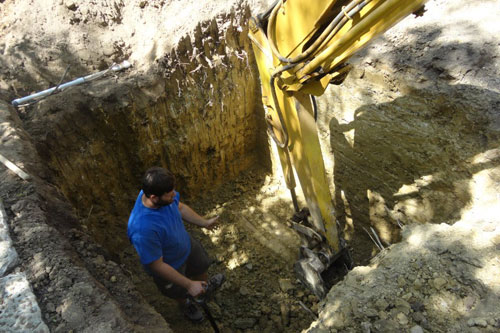Pond Construction Permits
The allure of a beautiful pond gracing your property is undeniable, but the path to creating this aquatic haven often involves more than just shovels and water. Regulatory aspects, such as permits and local regulations, play a pivotal role in pond construction. In this in-depth guide, we will unravel the complex world of pond construction permits. By the end, you’ll have a clear understanding of the legal requirements and a roadmap for turning your pond dreams into reality while staying compliant with the law.
Why Permits Matter
Before diving into the specifics, let’s understand why permits for pond construction are crucial:
- Environmental Protection: Permits help ensure that ponds are constructed in an environmentally responsible manner, preventing adverse effects on ecosystems and water quality.
- Property Rights: They protect property rights by defining property boundaries and water rights, reducing potential disputes with neighbors.
- Safety: Regulations help safeguard public safety by ensuring ponds are constructed and maintained in a way that minimizes risks.
- Local Aesthetics: Permits often contain guidelines for pond aesthetics, preserving the visual harmony of the community.
Types of Pond Construction Permits
Pond construction permits can vary depending on the scale and purpose of the pond. Common types of permits include:
- Wetland Permits: These are required when building ponds in or near wetlands to protect sensitive ecosystems.
- Dam Safety Permits: Necessary for ponds with dams or berms to ensure their structural integrity and safety.
- Water Rights Permits: For ponds using water from a public water source or diverting water from a stream or river.
- Environmental Impact Permits: Required for large-scale pond projects that may impact the environment significantly.
Local Regulations and Zoning Laws
In addition to state-level regulations, local governments often have their own zoning laws and regulations concerning pond construction. These can include:
- Setback Requirements: Dictating how far a pond must be from property lines, buildings, and roads.
- Size and Depth Restrictions: Imposing limitations on the dimensions of the pond, especially for residential areas.
- Water Quality Standards: Establishing guidelines to maintain water quality and prevent pollution.
- Aesthetics: Requiring ponds to be visually pleasing and complementary to the surrounding landscape.
The Permitting Process
Navigating the permitting process can be challenging, but understanding the general steps involved can make it more manageable:
- Research and Consultation: Investigate local regulations, speak with relevant agencies, and consult experts if needed to understand the specific requirements for your pond project.
- Application Submission: Complete and submit the necessary permit applications to the appropriate authorities. Be prepared to provide detailed project plans and environmental assessments.
- Review and Approval: Your application will be reviewed by regulatory agencies, which may include environmental agencies, water resource boards, and local zoning boards. This process can take time, so be patient.
- Permit Issuance: Once your application is approved, you will receive the necessary permits, which may come with conditions or requirements you must adhere to during construction.
Compliance and Monitoring
After obtaining the required permits and commencing construction, it’s vital to comply with all conditions and regulations. Some permits may require ongoing monitoring and reporting to ensure continued compliance.
Common Pitfalls and Challenges
Pond construction permit processes can be complex, and some common challenges include:
- Changing Regulations: Regulations can evolve over time, potentially affecting your project. Staying informed is crucial.
- Environmental Impact: If your project has a substantial environmental impact, it may face more scrutiny and potential opposition.
- Property Disputes: Disputes with neighbors over water rights or pond aesthetics can slow down or halt construction.
Navigating the world of pond construction permits can be challenging, but it’s a necessary part of ensuring your pond is built legally and responsibly. To embark on your pond construction journey, start by researching local regulations and consulting with experts in pond construction and permit application. With the right knowledge and preparation, you can transform your property into a serene aquatic paradise while respecting the legal requirements that protect our environment and communities.
Check out our store for all your water gardening needs! Aquascape products are Aquascape Inc. Certified.
Thanks for reading at Meyer Aquascapes! We hope you’ve enjoyed our post on garden pond design. Please leave a comment below if you liked it or have any questions. We’d love to hear from you! Thanks for stopping by!



